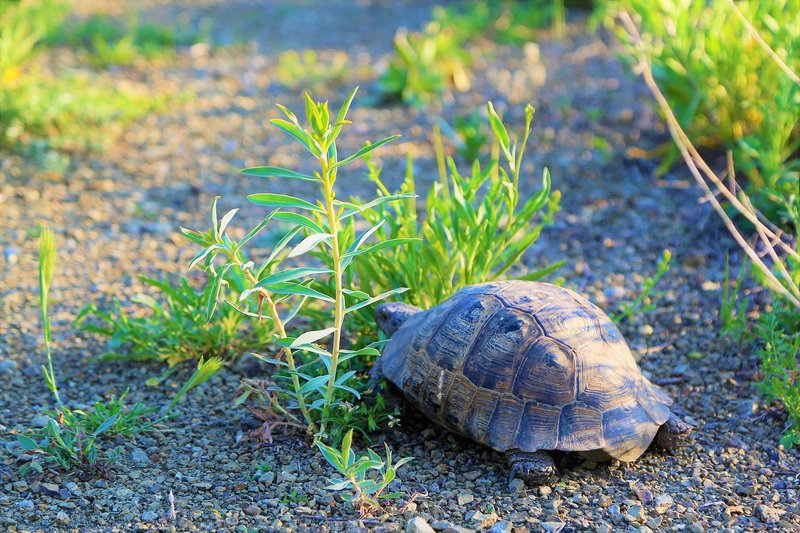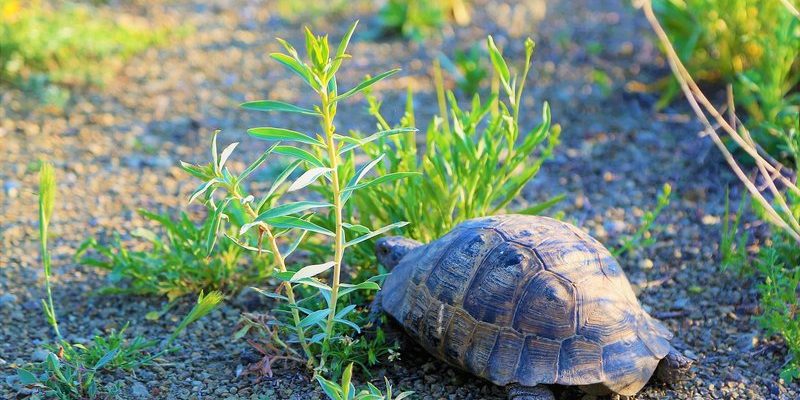
These slow-moving reptiles aren’t just about their heavy shells. They have an array of survival tactics that help them cope with everything from scorching heat to scarce food. Let’s dig into the incredible world of tortoises and uncover just how they manage to survive in the harshest environments.
Understanding Tortoise Habitats
Tortoises inhabit a variety of environments, from sandy deserts to rocky terrains and even lush grasslands. Each of these places presents unique challenges. For instance, desert tortoises thrive in arid areas like the Mojave Desert, where temperatures can soar during the day and plummet at night. This extreme fluctuation demands adaptability.
Adaptations for Survival
Let’s break down how tortoises adapt to their habitats:
- Shell Design: Their hard, domed shells are not just for protection. These shells help regulate temperature, providing a cooler environment when it’s hot outside.
- Behavioral Adjustments: Tortoises often engage in burrowing to escape the heat of the day. They dig into the cool ground, much like some people might retreat to an air-conditioned room when it’s too hot.
- Diet: Many tortoises are herbivores and can consume a wide variety of plants, which helps them get the nutrients they need—even in tough terrains.
These adaptations play a crucial role in their survival, giving tortoises a leg up against extreme conditions.
The Role of Water Conservation
Water is a precious resource, especially in dry habitats. Tortoises have developed remarkable ways to conserve water, allowing them to survive long periods without hydration. In fact, some species can go months without drinking, relying on moisture from their food instead.
How Do They Conserve Water?
Here are a few tricks tortoises use:
- Efficient Kidneys: Their kidneys are highly specialized, filtering out waste while retaining as much water as possible. Think of it like a high-efficiency washing machine that saves water!
- Behavioral Strategies: Many tortoises remain inactive during the hottest parts of the day. They know that slowing down means using less water, much like how we might stay inside to avoid sweating.
- Diet Choices: Tortoises often munch on succulent plants that contain high moisture levels. By choosing food wisely, they can stay hydrated without having to find water sources.
These methods highlight the tortoise’s cleverness when it comes to survival—making every drop of water count.
Temperature Regulation Techniques
Temperature extremes can be a tortoise’s worst enemy. Whether it’s baking under the sun or shivering in the cold, maintaining a stable body temperature is essential. Tortoises have several ways to manage their internal heat.
What Are Their Strategies?
These incredible reptiles use a combination of behavioral and physiological methods:
- Basking: In cooler conditions, tortoises will bask in the sun to warm up. They need to absorb heat, much like you might curl up under a blanket on a cold day.
- Burrowing: Conversely, during heat waves, they dig into the ground, where it’s cooler and more humid. This provides a refuge from the sweltering temperatures.
- Shell Color: Some species can even change the color of their shell slightly, reflecting more sunlight in the heat or absorbing more warmth in the cold.
These adaptive traits make them true masters of temperature management.
Food Sources in Scarce Conditions
Finding food in arid or rugged terrains can be quite a challenge. Tortoises have evolved to be opportunistic feeders. This means they adapt their diets based on what is available, allowing them to thrive even when resources are limited.
What Do They Eat?
Here’s a glimpse into their varied diet:
- Grasses and Weeds: Most tortoises love munching on grasses, especially in grassland habitats. These plants are low to the ground and easy to find.
- Fruits and Flowers: When available, they’ll indulge in fruits and flowers, adding some variety to their diet. Just picture a tortoise enjoying a delicious watermelon on a hot day!
- Succulents: In dry areas, tortoises turn to succulents for hydration and nutrition. These plants help keep them nourished in tough conditions.
By being flexible in their eating habits, tortoises make sure they always have something to sustain them.
Reproductive Strategies in Harsh Environments
Reproduction in harsh environments is another fascinating aspect of tortoise survival. Producing young ones in challenging conditions can be risky, but tortoises have their own ways of ensuring their species continues.
How Do They Manage This?
Tortoises have some interesting reproductive strategies:
- Nesting Behavior: Female tortoises often dig nests in soft soil, sometimes using the warmth of the sun to help incubate their eggs. It’s like using a natural oven!
- Timing: Many species time their mating and egg-laying during the rainy season when resources are more abundant. They know that having food available increases the chances of their offspring surviving.
- Longevity: Tortoises are known for their long lifespans. This means they have more opportunities to reproduce throughout their lives, ensuring the continuation of their genes.
These strategies show how adaptable and resourceful tortoises are, even in challenging circumstances.
The next time you think about tortoises, consider the incredible resilience they showcase in harsh environments. From their resourceful water conservation techniques to clever food choices and effective temperature regulation, these reptiles have mastered the art of survival. It’s a testament to nature’s creativity and adaptability.
So, whether you’re watching a tortoise meander through a park or learning about them in a book, remember that they carry with them centuries of experience in overcoming the odds. Their ability to thrive in tough environments is not just impressive; it’s a reminder of the wonders of nature and the extraordinary ways life finds a way to endure.

